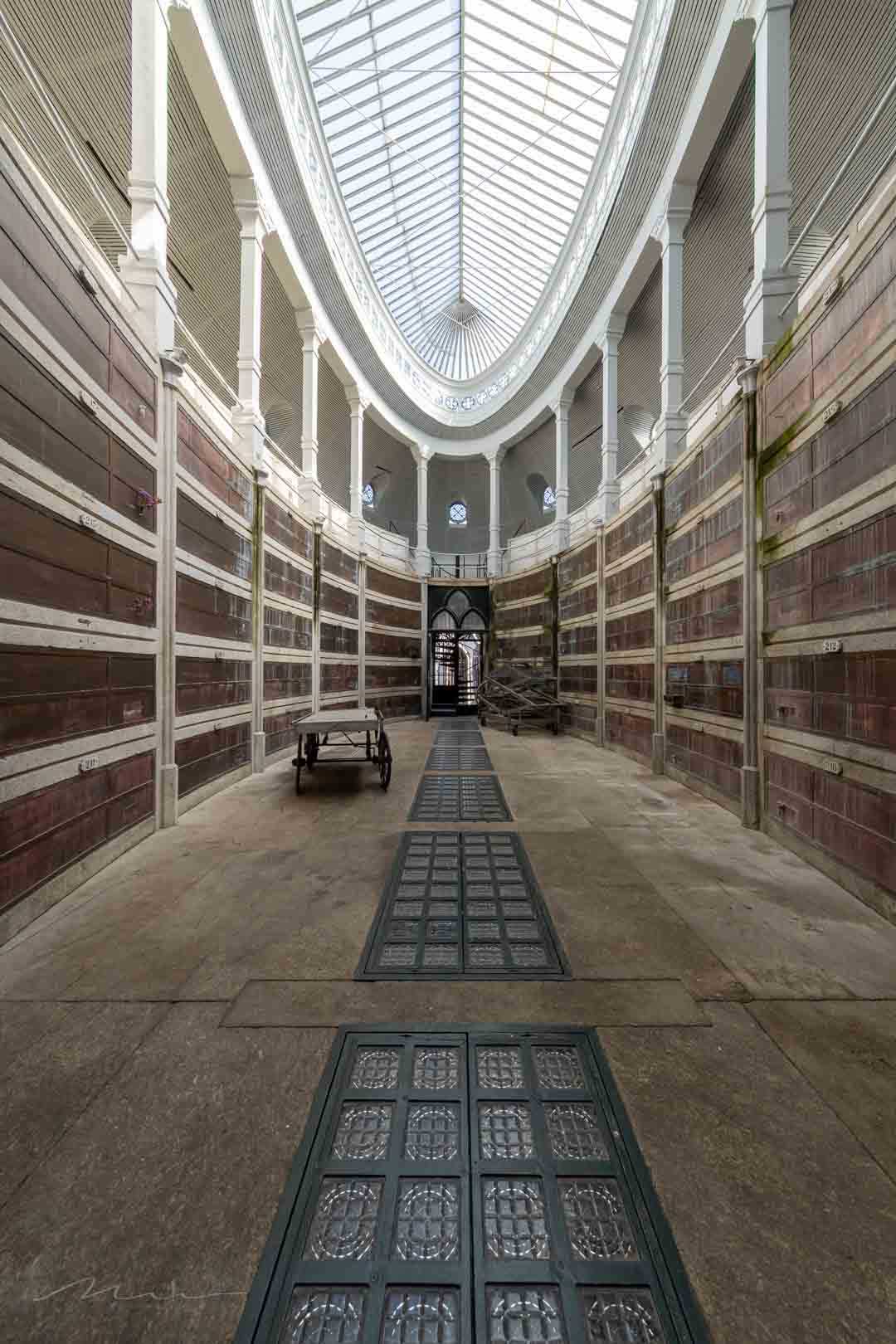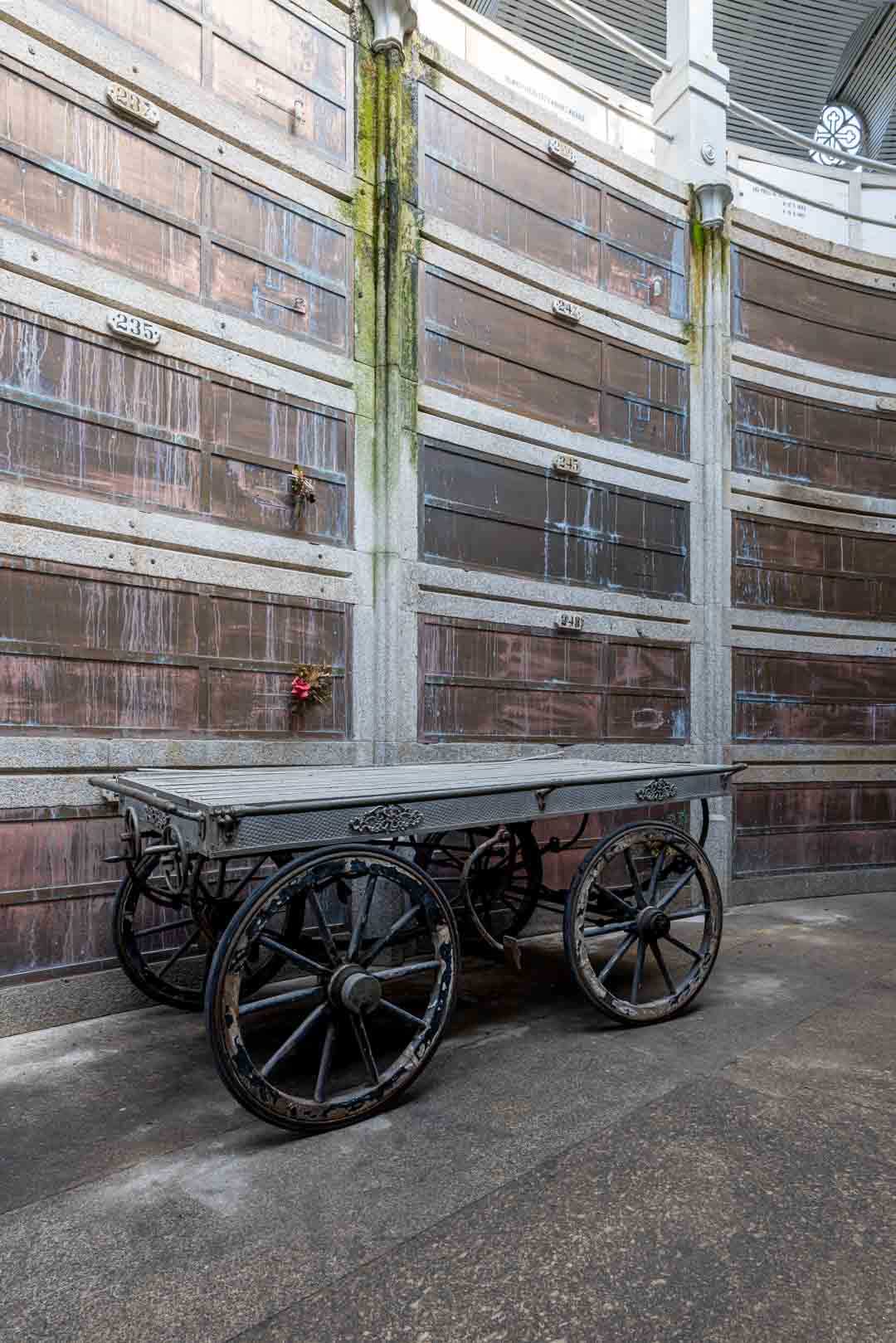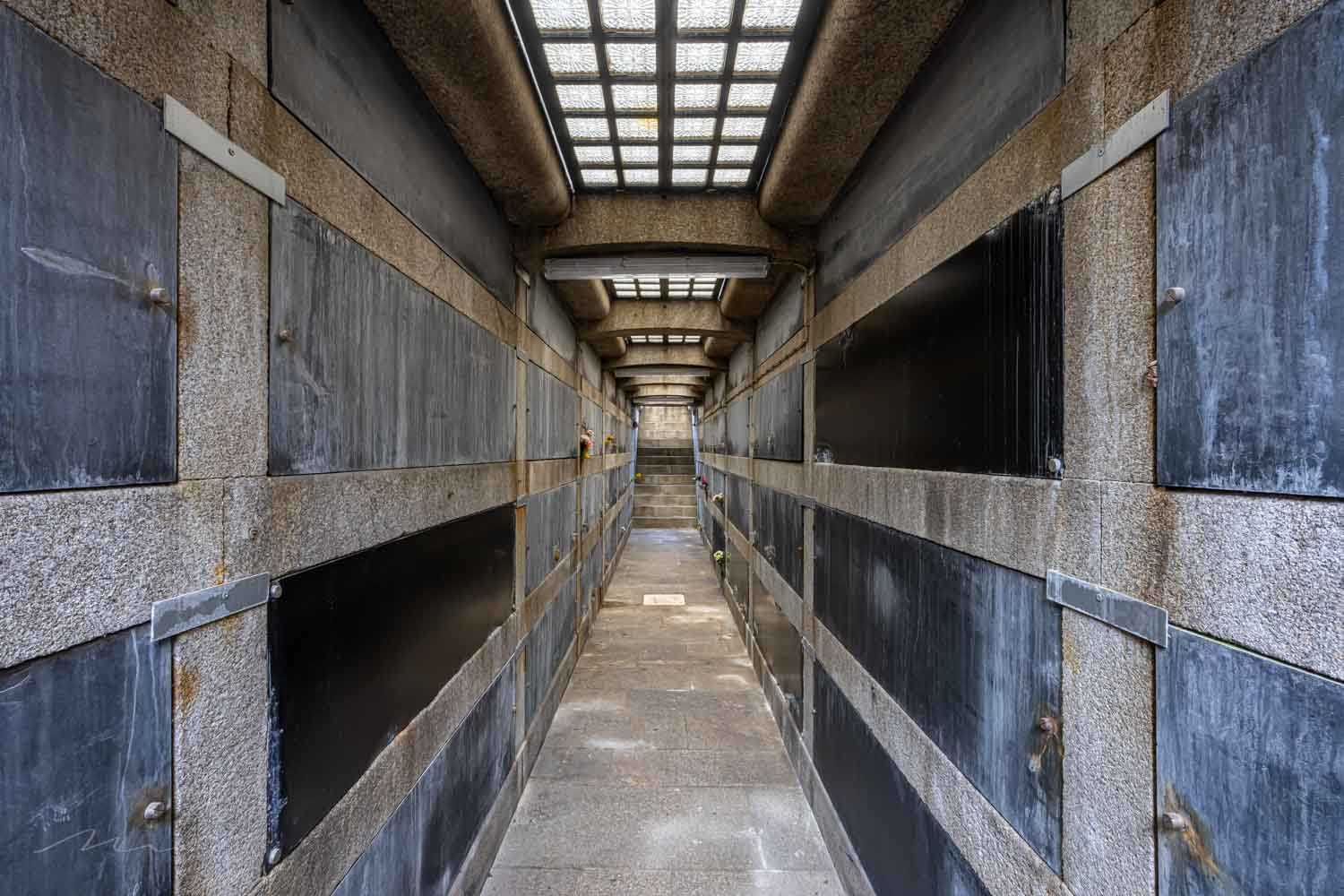Oval Crypta
- March 30, 2025 - Journeys
The Oval Crypta: A Reflection of Memory and Modesty
Nestled within a historic cemetery in Portugal, the Oval Crypta is a striking municipal mausoleum, crafted from granite and iron and distinguished by its graceful, elliptical form. This unusual structure, built across three levels—one below ground—was designed with light in mind. A large oval skylight bathes the above-ground chamber in natural illumination, while glass panels set into the floor allow light to cascade into the subterranean level, creating a solemn but serene atmosphere. In the main room, the quiet presence of an old trolley and scissor lift offers a poignant reminder of the crypt's continued history of use and care.
The interior walls of the Oval Crypta are lined with rows of repositories—simple compartments where the bones of the deceased are respectfully stored. These are the remains of those who could not afford the luxury of a private plot or a grand tomb. Instead, they found their final rest within this communal ossuary, a testament to the dignity afforded even to those with the humblest means.
History
The cemetery itself dates back to 1855, born from urgent necessity during one of history’s most devastating cholera epidemics. With death rates soaring, the authorities required swift interments to curb the spread of the disease, and the cemetery rapidly expanded to accommodate the influx. By the 1860s, the grounds began to transform, as Brotherhoods and religious Orders from the city established their own fenced-off sections for private burials.
The evolution continued into the 1870s, when a chapel was added to the cemetery grounds. It was around this time that regulations relaxed to allow the installation of monuments. Gradually, the once modest burial site became a showcase of elaborate mausoleums and crypts, many commissioned by the city’s wealthiest families. As time passed, the cemetery grew to host the remains of many notable Portuguese figures—artists, musicians, painters, and architects—each entombed beneath intricate stonework and grand memorials.
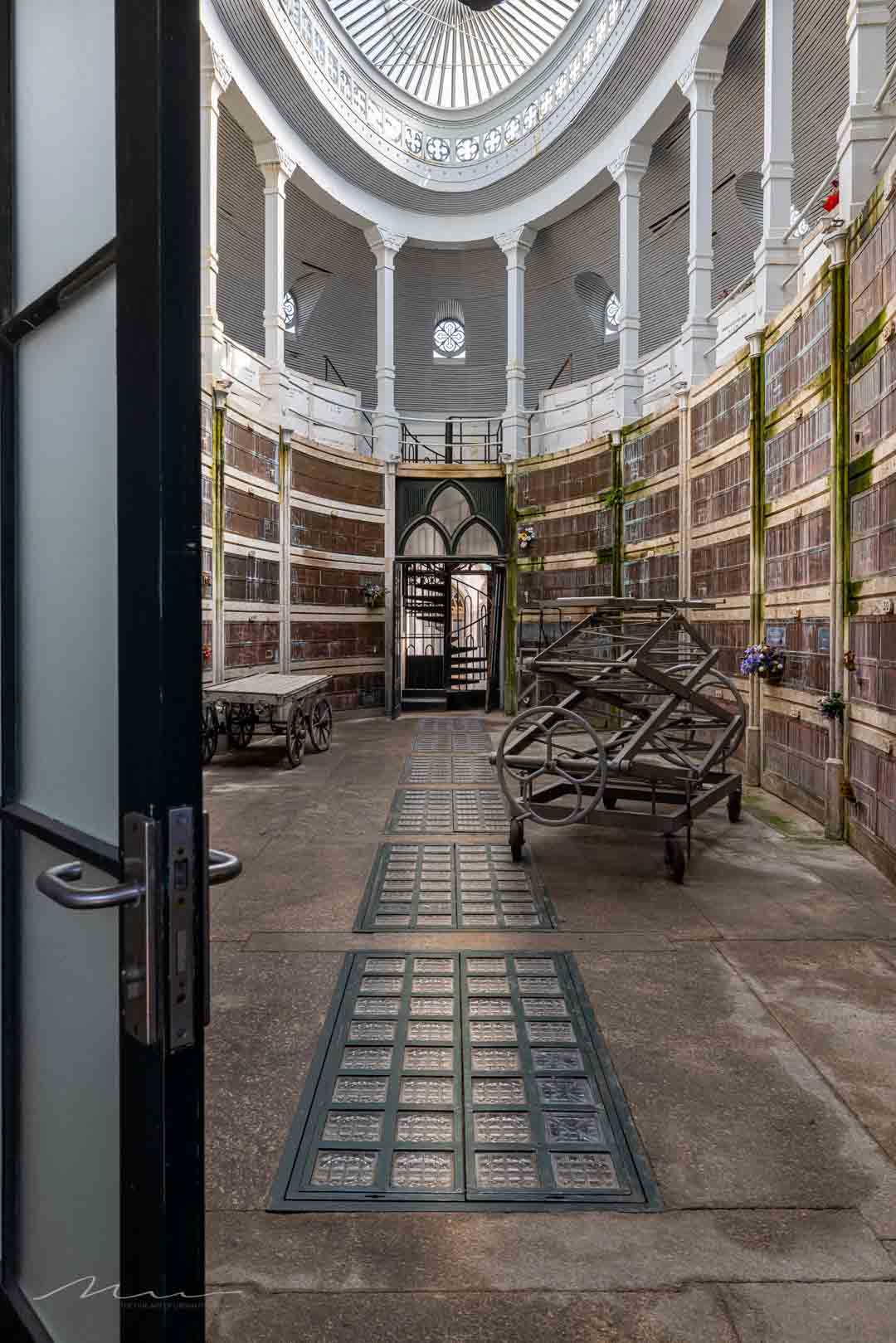
The 1855 Cholera Epidemic and the Birth of the Oval Crypta
In the mid-19th century, Europe was devastated by multiple waves of cholera outbreaks, and Portugal was no exception. The cholera pandemic would have been part of the third global cholera pandemic (1846–1860), which was one of the deadliest.
Key points about this epidemic:
-
Origin: Cholera first spread from India (where it was endemic) via trade routes. By the 1830s and especially the 1840s and 1850s, it had made its way through Europe, the Middle East, and North Africa.
-
Impact on Portugal:
In Portugal, cholera hit especially hard around 1855, causing a sharp increase in deaths. Lisbon and other urban centers struggled to cope with the rapid spread. Public health infrastructure at the time was very poor — drinking water and sewage systems were often contaminated — which made urban populations particularly vulnerable. -
Cause:
The scientific understanding of cholera was very limited at the time. The dominant belief was still in the "miasma theory" (that diseases were caused by bad air), although later in the 1850s and 1860s, scientists like John Snow in England would show that cholera was a waterborne disease. -
Burial practices:
Because cholera was extremely contagious and feared, governments demanded fast burials to prevent further outbreaks. Mass graves and rapid expansion of cemeteries were common responses. That’s likely why the cemetery you’re writing about (and its later additions like the Oval Crypta) had to be developed quickly. -
Societal effects:
Cholera outbreaks intensified divisions between the rich and poor. Wealthier individuals often fled cities during epidemics, while poorer populations were left behind in overcrowded, unsanitary conditions, suffering most of the deaths.
In short:
-
Portugal in 1855 faced a deadly cholera epidemic.
-
It triggered emergency public health measures, like the rapid expansion of burial grounds.
-
It disproportionately affected the poor, whose remains today are commemorated in structures like the Oval Crypta.
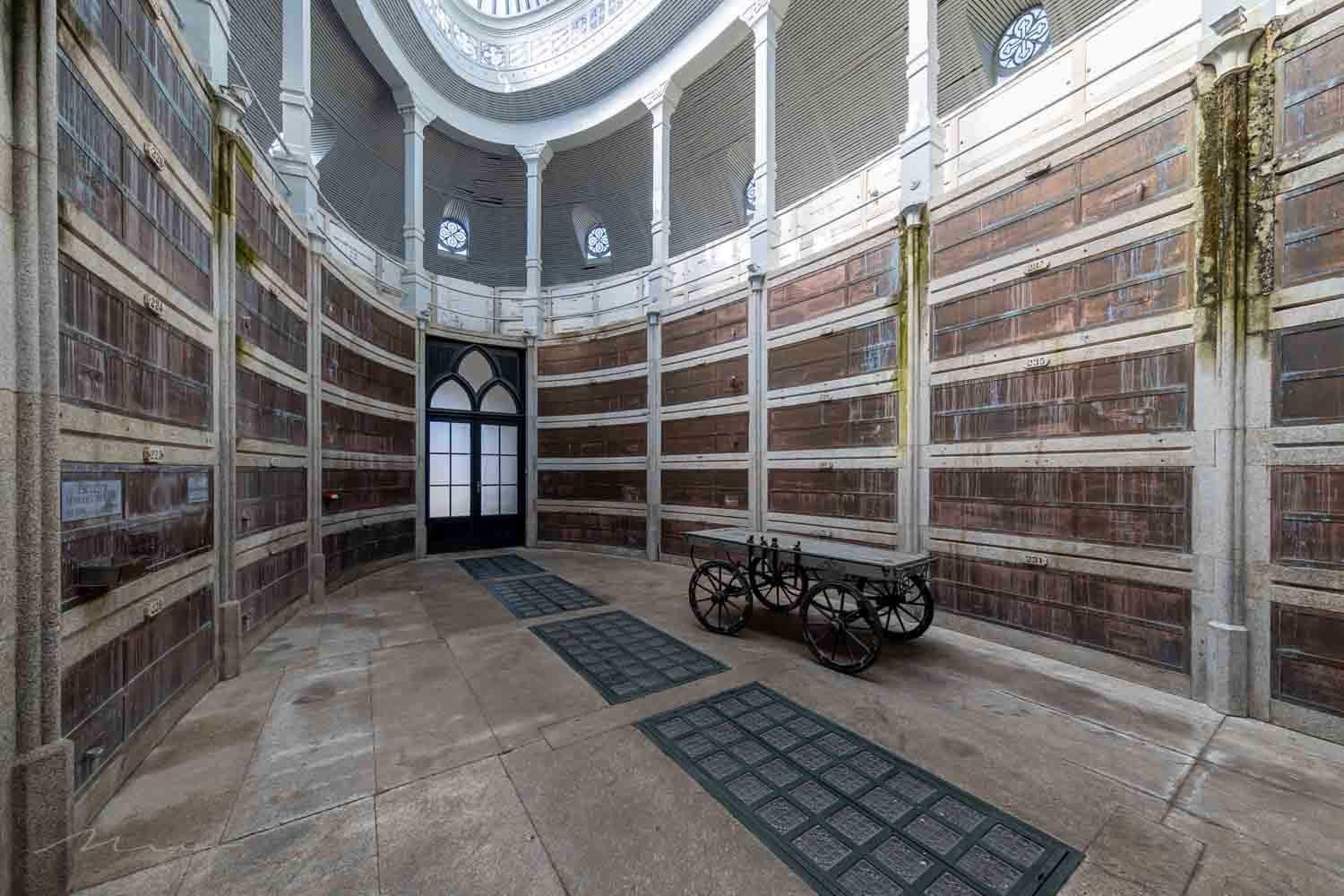
present day
Today, the Oval Crypta draws the attention of photographers, historians, and visitors interested in "dark tourism".
Yet it is important to understand that this site is not abandoned, as some images may misleadingly suggest. The crypt and the surrounding cemetery remain well-maintained, a peaceful and beautiful place dedicated to remembrance. Visitors are encouraged to approach it with reverence, acknowledging the deep history and human stories that rest within its stone walls.
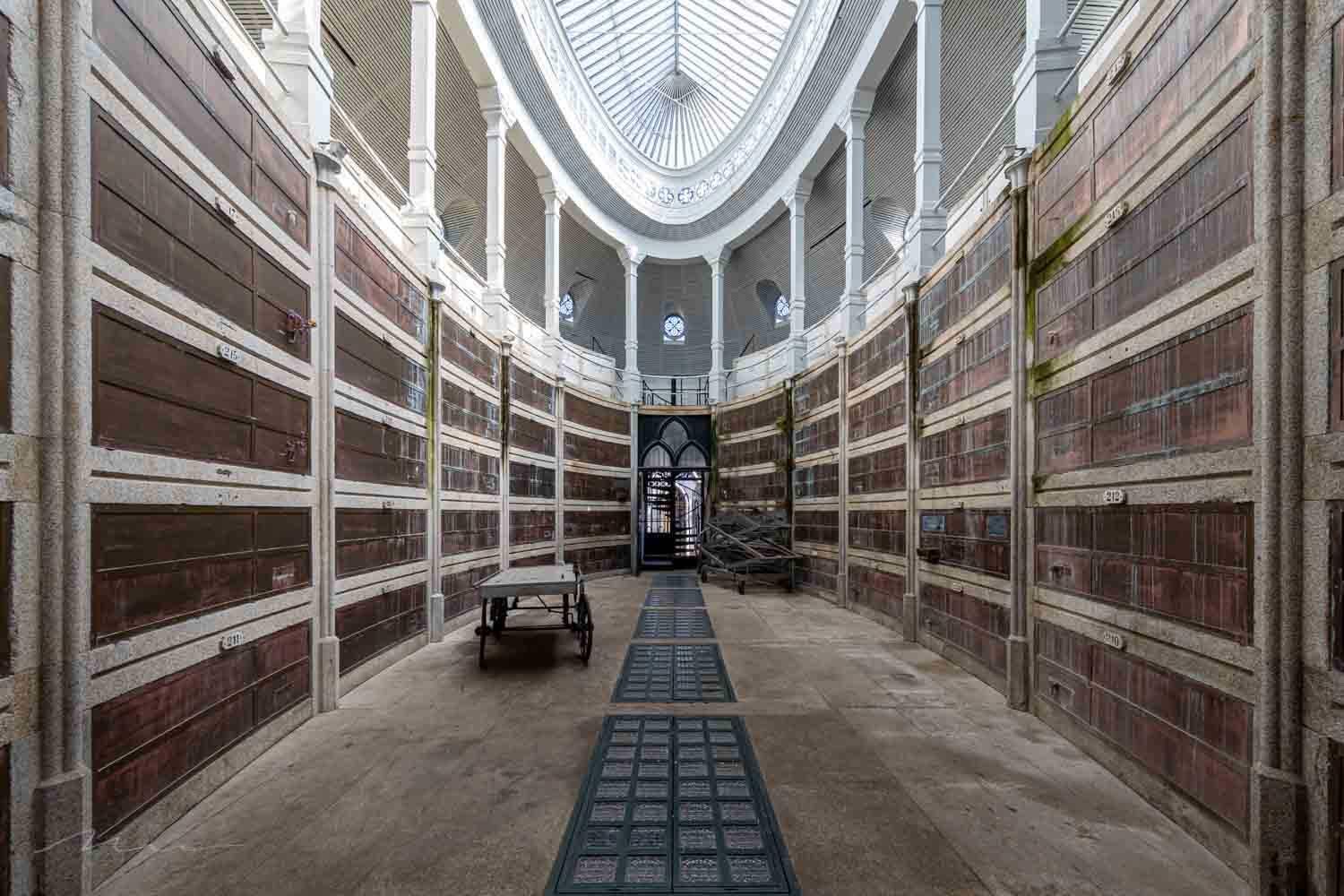

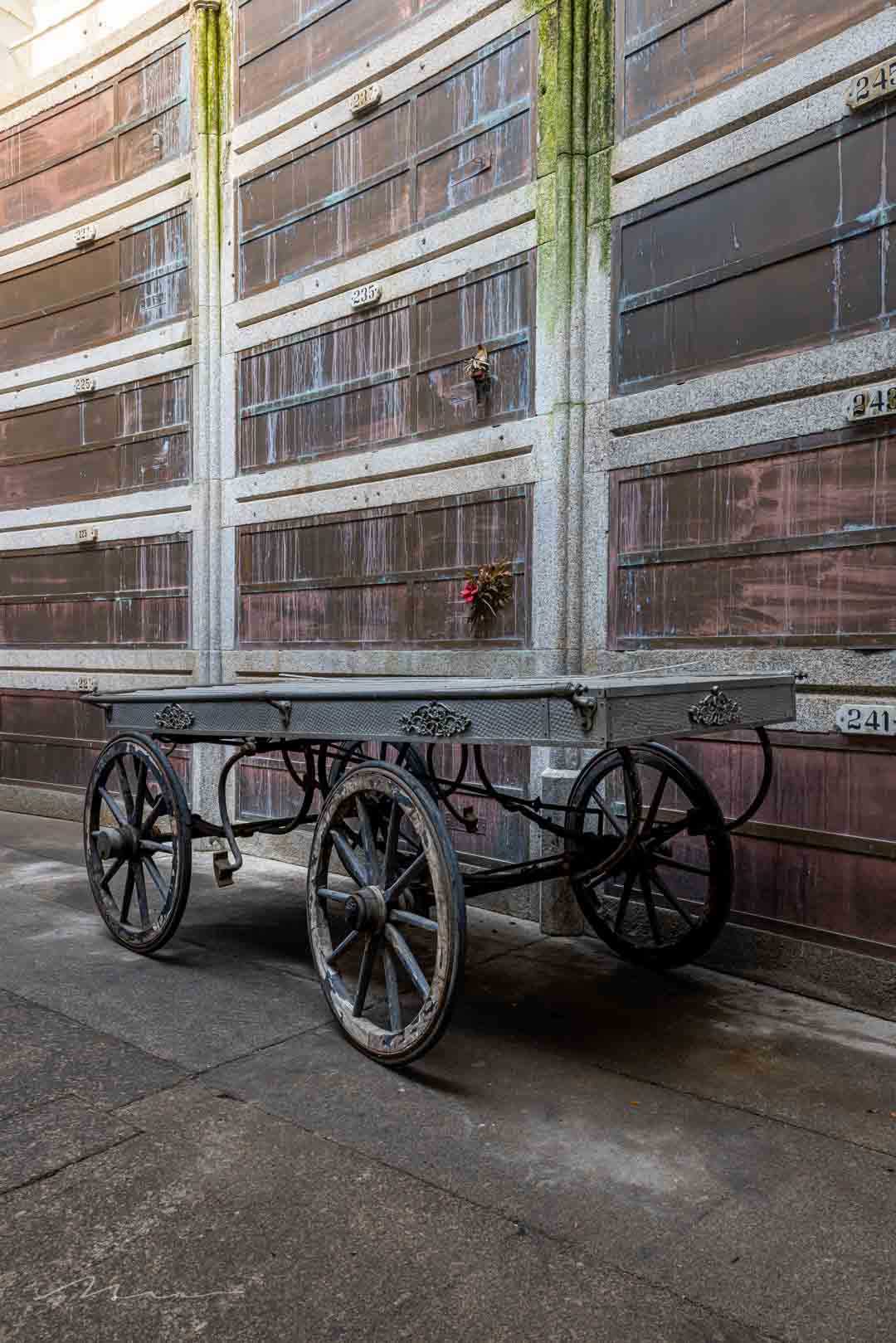
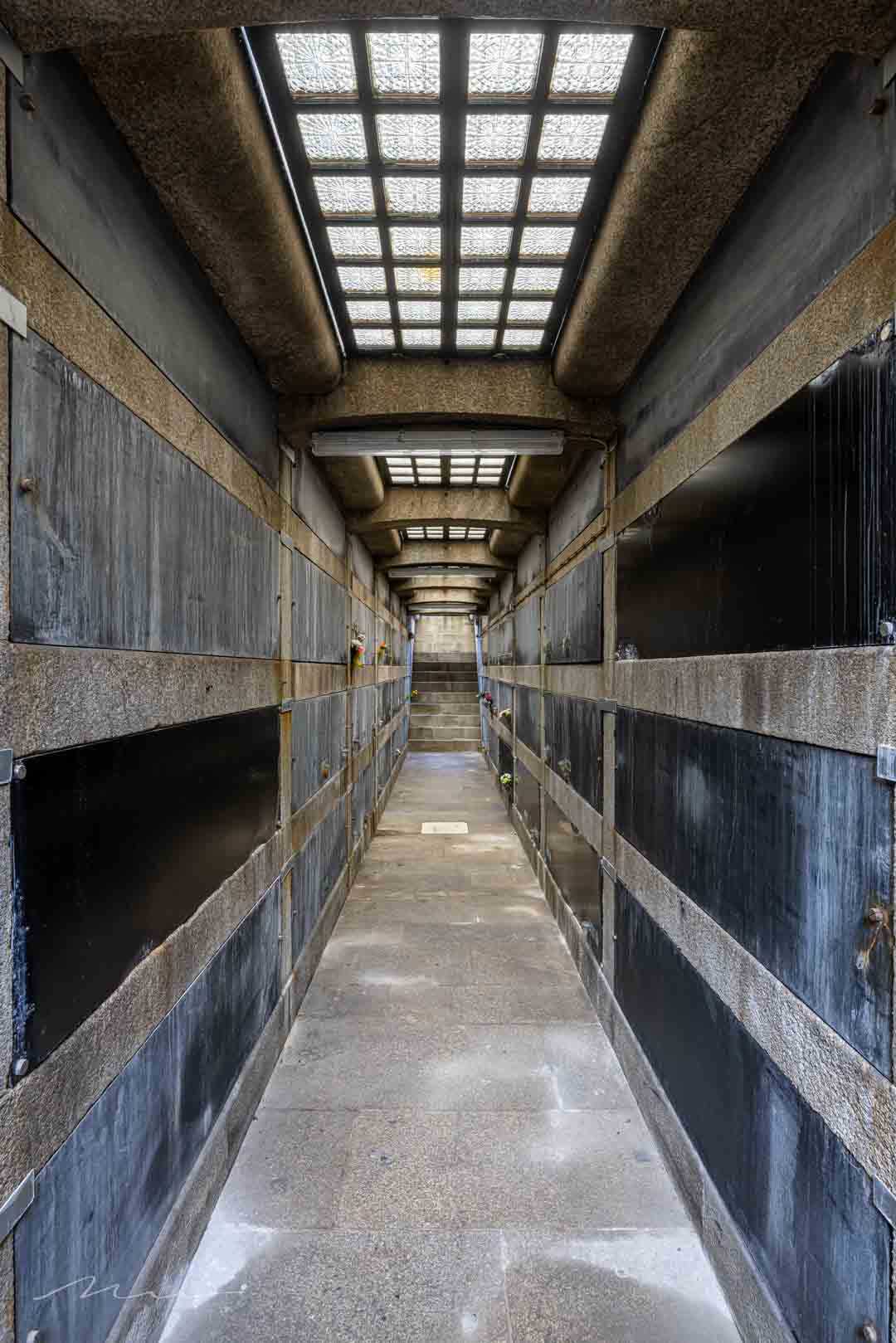
Photogenic
While "we" are on grounds of the deceased and the Oval Crypta is offcourse special to the family's. Most of the present people are ok with it, I mean taking pictures in here. I have visited this place twice in the last few years and each time we met very nice people.
